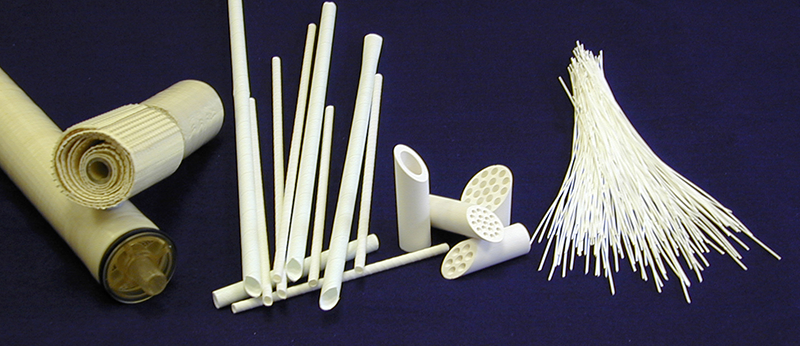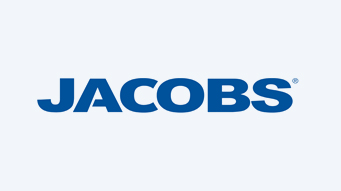
Selecting the appropriate membrane for a water treatment plant
Selecting the appropriate membrane for a water treatment plant is the responsibility of process engineers. When they need to separate, clarify, or fractionate process streams—and when they require reliable and repeatable performance—membrane filtration systems often become their first choice.
At a basic level, membrane filtration involves separating a single flow into two streams, one more concentrated than the other, using pressure to selectively pass materials through a semi-permeable physical barrier (membrane). The separated streams can then undergo further treatment, or in the case of a waste stream, be diverted to an appropriate outlet.
With the ability to separate particles from dissolved species and separate dissolved species themselves, selecting the appropriate membrane is crucial for producing a more concentrated or purer final product. With the correct membrane selection, the filtration process can isolate dissolved species of specific sizes while allowing other dissolved components to permeate through the membrane.
One of the key critical factors in selecting the appropriate membrane is the nature of the process fluid. Knowing the dissolved solids content, the molecular weight of the dissolved species, and the nature and load of any suspended material will guide the engineer toward selecting the correct membrane. The pH and temperature of the incoming process stream are also important factors in making the final decision.
Selecting the appropriate membrane for filtering all molecular weights
The spectrum of membrane filtration starts at the smallest molecular level with reverse osmosis (RO). The process that allows the finest degree of separation. Dissolved species will pass through the membrane as you move through the filtration spectrum from dehydrating water or purifying water with extremely tight reverse osmosis membranes. Through nanofiltration, ultrafiltration, and finally microfiltration, which is essentially separating sub-micron particles from the dissolved species between them. These processes can separate particles that vary in size from anything from a few angstroms to a few microns. The different levels of membrane filtration require internal pressures ranging from 1000 psi (70 bar) in high-pressure systems to less than 15 psi (1 bar) in low-pressure microfiltration units.
Selecting the appropriate membrane
The spectrum of membrane filtration ranges from reverse osmosis (RO), which allows the finest degree of separation, through nanofiltration, ultrafiltration, and finally microfiltration, which separates sub-micron particles from the dissolved species.
Membrane Filtration
Membrane filtration uses a tight membrane that retains almost all dissolved species, including sugars and salts. The pressure in this system must exceed the natural osmotic pressure of the dissolved water or other solvents through the semi-permeable membrane. Membrane filtration systems are particularly useful in concentrating low-concentration fruit juices, tea, coffee, and sugar solutions. The technology is also often used to concentrate wastewater streams such as landfill leachate.
Nanofiltration
The next level of filtration bridges the gap between membrane filtration and ultrafiltration. Ultrafiltration is often used to remove salts from liquid dyes or concentrate antibiotics. Ultrafiltration is used in a wide range of industrial applications. Its versatile nature makes it suitable for separating diverse streams such as waste streams from dye houses and pulp and paper mills. And protein concentration in the dairy industry to juice filtration. It can also be used as a pre-treatment to prevent resin column fouling by particles. The upper end of the particle size spectrum requires microfiltration. Here, ceramic and polymeric membranes are often used to provide a wide range of pore sizes. To treat fluids in the food, beverage, pharmaceutical, and chemical industries, as well as to separate wastewater.
Membrane configurations and materials
Membrane filtration technology has evolved in how membranes are packaged and the type of membrane material used. The result is a wide range of unit configurations and membrane geometries, which suit a variety of applications. Membranes are typically supplied in tubular, spiral, flat, or hollow fiber arrangements with newer configurations that induce vibration. Or use rotating vanes to increase filtration rates by reducing membrane surface concentration polarization effects (however, these newer methods are not always economical).
Tubular membranes
For example, have many advantages. They can handle viscous fluids with high levels of suspended solids and can be cleaned chemically or mechanically. Tubular polymeric membranes are typically housed in stainless steel or plastic units.
Spiral membranes
Spiral membranes, as the name suggests, consist of tightly packed filter material with hollow fibers placed between mesh spacers and wrapped into a small diameter tube. This high packing density means there is much more surface area in a given filtration unit than can be provided by tubular membranes. However, if suspended solids are present in the process stream, spiral membranes require fine pre-filtration to prevent clogging. Advances in mesh spacer sizes and designs are helping to increase the number of applications suitable for spiral membranes.
Hollow fiber membranes
Hollow fiber membranes also have a high density and consist of extruded fibers with a small hollow section. Filtration can occur from inside the fiber to the outside or vice versa from the outside of the fiber to the inside allowing for a backwash cycle. Although more flexible in handling small particles than spiral membranes. hollow fibers often also require pre-filtration where larger particles or fibers are present in the feed material. Most hollow fiber membranes cannot be used at pressures higher than 30 psi (2 bar) without breaking.
Polymer membranes
Membrane materials are typically made from polymers or ceramics. Polymeric spiral membranes are generally used when high throughput is needed, while tubular polymer membranes. Which can often be cleaned mechanically. Are more suitable for processes requiring low maintenance. Or high-viscosity products, or fluids containing suspended materials.
Hostile environments, high solvent levels, wide pH ranges, and other process considerations may lead to the use of ceramic membranes. This technology, usually adopted for ultrafiltration and microfiltration applications typically uses alumina or zirconia coating applied to the inner surface of a ceramic support. The capital cost of ceramic membranes is much higher than that of conventional polymeric membranes. But in some applications, they are the only viable proposition. However, offsetting the high initial cost is the fact that ceramic membranes often provide a longer operating life. However, ceramics are not resistant to erosion whereas polymers may be.
Consulting a specialist
Selecting the appropriate membrane for each application is vital, and experienced water treatment companies like CareWater. For example, can assist engineers in making the right decision. For many applications, these companies can provide membrane filtration units as a standard design, requiring minimal testing. In other situations, design engineers may need to extensively test the process on-site.


























